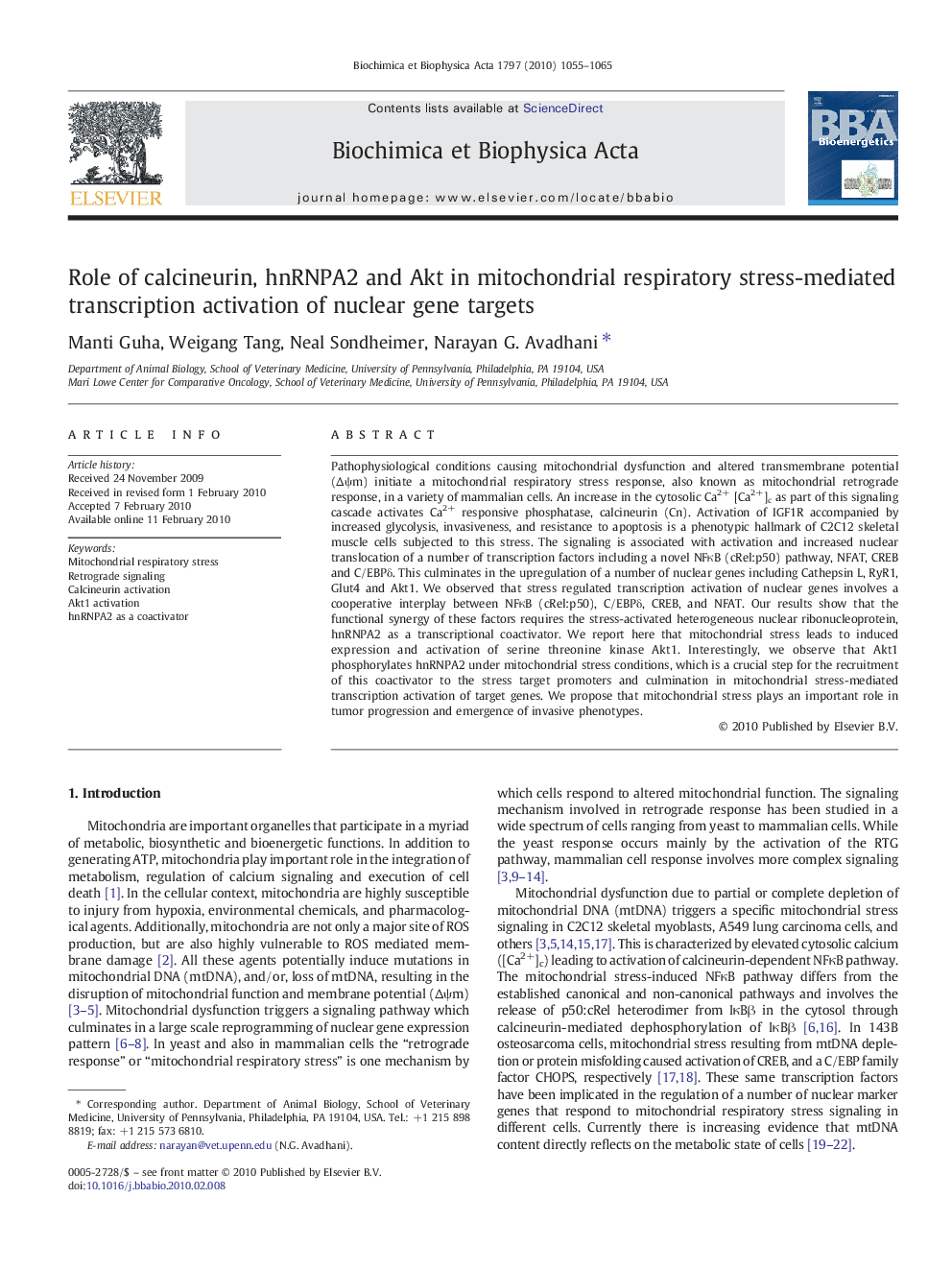| Article ID | Journal | Published Year | Pages | File Type |
|---|---|---|---|---|
| 8298955 | Biochimica et Biophysica Acta (BBA) - Bioenergetics | 2010 | 11 Pages |
Abstract
Pathophysiological conditions causing mitochondrial dysfunction and altered transmembrane potential (âÏm) initiate a mitochondrial respiratory stress response, also known as mitochondrial retrograde response, in a variety of mammalian cells. An increase in the cytosolic Ca2+ [Ca2+]c as part of this signaling cascade activates Ca2+ responsive phosphatase, calcineurin (Cn). Activation of IGF1R accompanied by increased glycolysis, invasiveness, and resistance to apoptosis is a phenotypic hallmark of C2C12 skeletal muscle cells subjected to this stress. The signaling is associated with activation and increased nuclear translocation of a number of transcription factors including a novel NFκB (cRel:p50) pathway, NFAT, CREB and C/EBPδ. This culminates in the upregulation of a number of nuclear genes including Cathepsin L, RyR1, Glut4 and Akt1. We observed that stress regulated transcription activation of nuclear genes involves a cooperative interplay between NFκB (cRel:p50), C/EBPδ, CREB, and NFAT. Our results show that the functional synergy of these factors requires the stress-activated heterogeneous nuclear ribonucleoprotein, hnRNPA2 as a transcriptional coactivator. We report here that mitochondrial stress leads to induced expression and activation of serine threonine kinase Akt1. Interestingly, we observe that Akt1 phosphorylates hnRNPA2 under mitochondrial stress conditions, which is a crucial step for the recruitment of this coactivator to the stress target promoters and culmination in mitochondrial stress-mediated transcription activation of target genes. We propose that mitochondrial stress plays an important role in tumor progression and emergence of invasive phenotypes.
Keywords
Related Topics
Life Sciences
Agricultural and Biological Sciences
Plant Science
Authors
Manti Guha, Weigang Tang, Neal Sondheimer, Narayan G. Avadhani,
